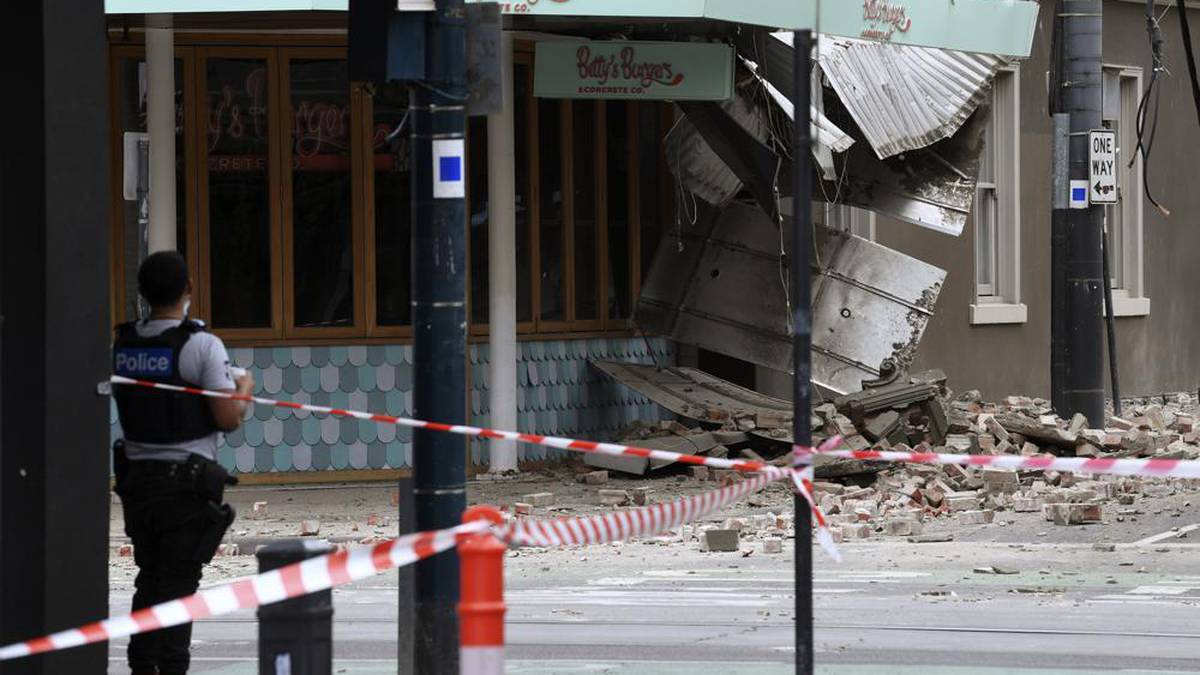Aftershocks from one of the biggest earthquakes to hit Australia in recent years could continue to rock residents for months, one expert says.
The biggest earthquake in more than 50 years to impact a significant population centre in Australia has rocked residents in Melbourne and several other cities, with aftershocks potentially being felt for months.
The 5.9 magnitude earthquake whose epicentre was located in Mansfield – a small town about 180km northeast of Melbourne – was felt in the Victoria capital and by some residents in cities as far away as Sydney and Canberra, as well as in Tasmania.
It was larger in magnitude to an earthquake that devastated the city of Newcastle, north of Sydney, in 1989, which was a magnitude 5.6.
Professor Chris Elders of Curtin University’s School of Earth and Planetary Sciences said it has been more than 50 years since such a large earthquake had hit a significant population centre – when one hit Meckering, Western Australia, 130km east of Perth, in October 1968. The 6.5 magnitude quake caused around $2 million worth of damage and injured about 20 people.
“It is unusual to have an earthquake of this size. It’s certainly the largest one that’s affected Australia in recent times,” Elders told news.com.au.
“It’s at the upper end of what we experience in Australia.”
While there have been other quakes in Australia of a similar size, they have generally occurred in more remote areas.
The most recent quake that Australians would remember is the one which hit Newcastle on December 28, 1989, more than 30 years ago. This killed 13 people and damaged 50,000 buildings, with a damage bill adding up to around $4 billion. More than 300,000 people were affected by that quake, and 1000 were left homeless.
In 2019, there was 6.6 magnitude quake that occurred offshore near Western Australia’s Kimberley Coast and was felt in Darwin and Perth.
Following today’s quake, which hit around 9am, there has already been a second tremor in Mansfield, understood to be an aftershock with a magnitude of 4.0.
Elders said there were likely to be more aftershocks and tremors after such a large earthquake.
“Certainly in the days ahead we are likely to experience some and they can last several weeks or maybe even months but generally they would be much smaller and not as noticeable, although sometimes you can get a significant aftershock,” he said.
He said a 5.9 magnitude quake is large enough to cause significant structural damage to buildings, depending on how close they are to the epicentre and what type of bedrock they were built on.
“Fortunately it appears in this case it has caused superficial but not structural damage,” he said.
Elders said there were several hundred earthquakes every year in Australia but they were generally much smaller and located in more remote areas so people didn’t feel or hear about them.
These were generally magnitude 2 or 3 quakes that would feel similar to a “big lorry driving past your house and making things rattle a bit”.
“They are often not very close to major centres and are pretty evenly distributed throughout the continent,” he said.
Elders said Australia was surrounded by tectonic plate boundaries.
“There are forces being generated all around Australia and so it’s not surprising that stresses build up within the continent and cause an old fault line to fail and move,” he said.
“The quake would be the result of that.”
He said it was very difficult to predict when earthquakes will occur and there was no warning of today’s quake in Victoria.
It’s also not unusual for a large quake to be felt over a very wide area, with Prof Elders saying the depth of the quake influenced this.
“The larger it is and the shallower it is, the more widely it will be felt,” he said.
“At the moment it’s been suggested the quake occurred 10km deep but that’s probably just a preliminary estimate.
“We won’t really know for a little while what depth it occurred at.”
For those who are concerned about what to do during a quake, Elders said the best advice is for people to get under a table if there is one close by, or if the exit is clear, to leave a building and to move away from it, into open space to avoid anything that might be falling.
Source: Read Full Article

/cloudfront-ap-southeast-2.images.arcpublishing.com/nzme/Q5FWBE2LVVTSIC7FWHYDSA7CCA.jpg)




